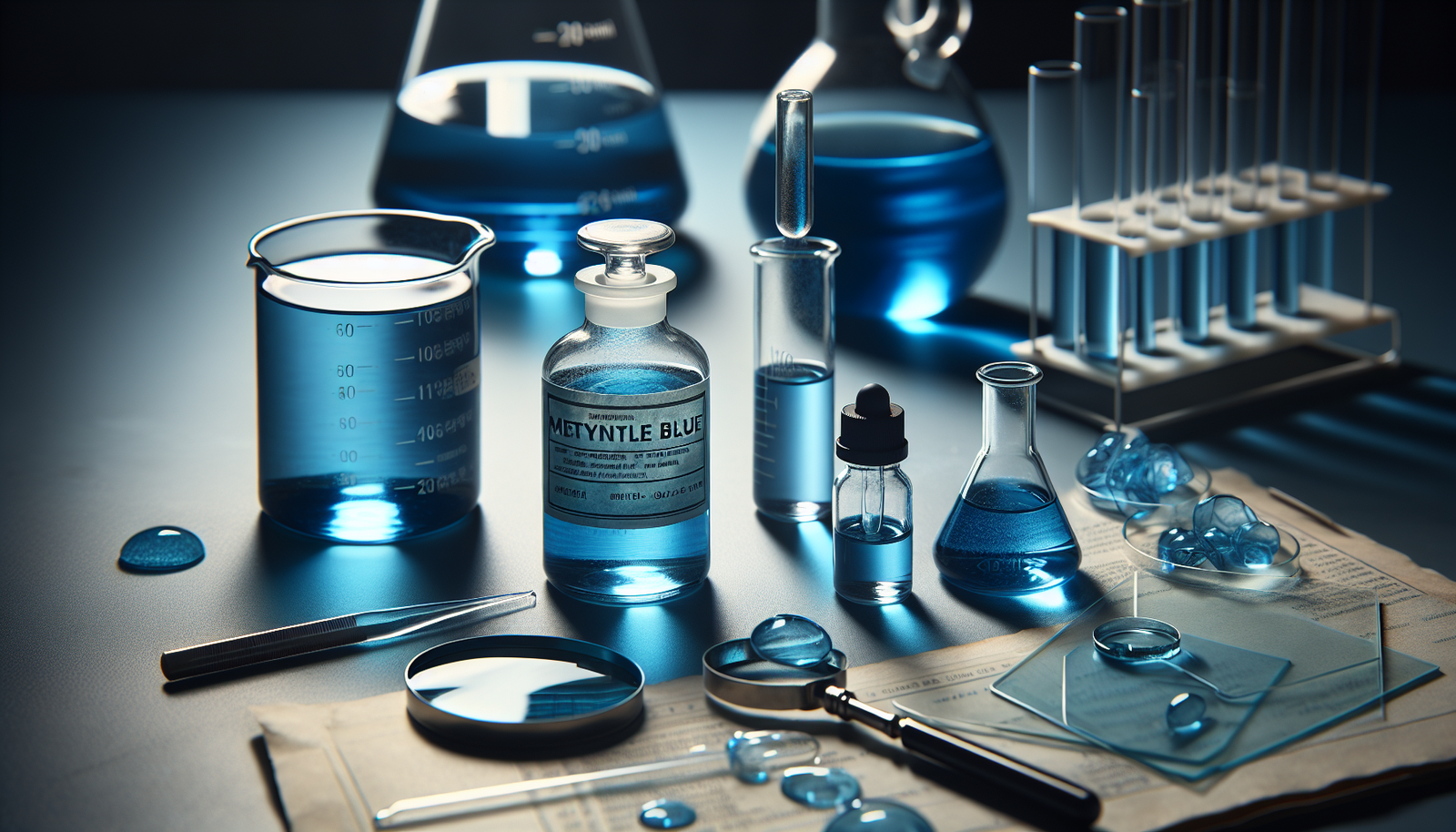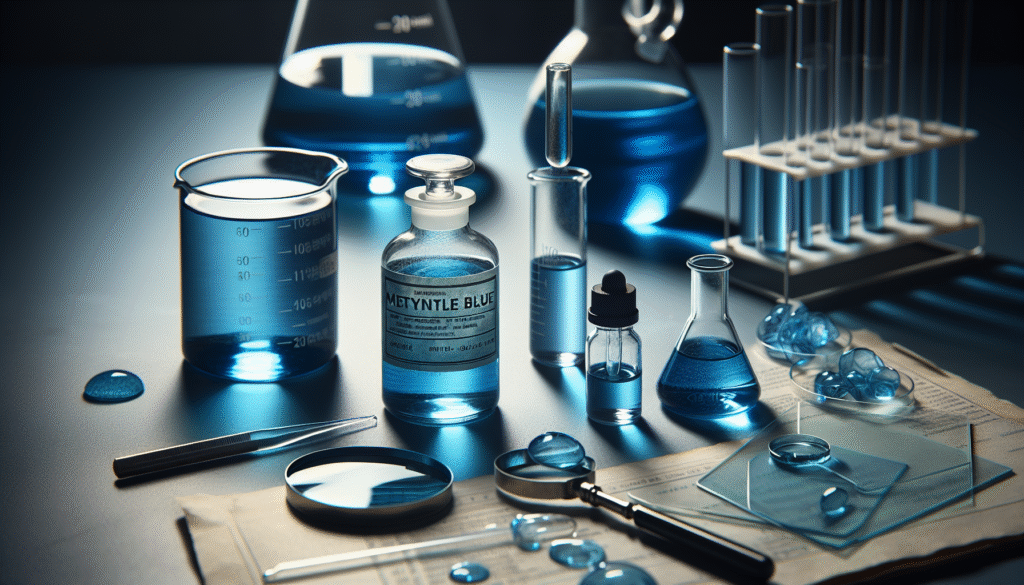
Have you ever wondered how to use methylene blue safely and effectively? This chemical compound, with applications ranging from laboratory settings to potential health benefits, warrants careful handling to ensure your safety and well-being. This guide aims to provide you with a comprehensive understanding of methylene blue, its uses, safety precautions, and more, making it suitable for anyone, regardless of prior knowledge.

What is Methylene Blue?
Methylene blue is a synthetic dye and medication that has been utilized for over a century. Its primary applications include treating methemoglobinemia, a condition where hemoglobin cannot effectively release oxygen to body tissues. It also finds use in various laboratory settings as a dye, a biological stain, and a redox indicator.
The History of Methylene Blue
Understanding methylene blue necessitates exploring its history. Initially developed in the late 19th century, this compound saw rapid adoption in clinical medicine. Throughout the years, its uses have expanded, leading researchers to investigate its potential benefits in treating conditions such as Alzheimer’s disease, malaria, and even certain types of cancer.
Chemical Composition
The chemical formula of methylene blue is C16H18ClN3S, a structure that contributes to its distinctive blue color. This compound is soluble in water and has a relatively stable nature, making it easier to work with in various applications.
Uses of Methylene Blue
Methylene blue is not just a colorant; it serves numerous functions in both healthcare and scientific research. Below are some of the primary uses of methylene blue:
Medical Applications
Methylene blue is commonly used as a treatment for methemoglobinemia. In this condition, the iron in hemoglobin is oxidized, leading to reduced oxygen transport in the bloodstream. Administering methylene blue helps reduce oxidative stress and restore hemoglobin to its functional form.
Diagnostic Uses
In medical diagnostics, methylene blue is employed as a staining agent. It can reveal certain types of cells or tissues during examinations, aiding in the identification of diseases. For example, it assists in visualizing bacteria in samples, thus providing crucial insights for diagnosis.
Laboratory Uses
In laboratory settings, methylene blue functions as a redox indicator. Its color change, from blue to colorless, indicates specific chemical reactions, helping scientists obtain valuable data during various experiments. Additionally, it’s used as a dye in microscopy to enhance visibility.
Biological Effects
Emerging research suggests that methylene blue may have neuroprotective properties. Preliminary studies point toward its potential to enhance mitochondrial function and aid in the treatment of neurodegenerative diseases. Clinical applications are still being studied, with ongoing research investigating its efficacy in these areas.
How to Use Methylene Blue Safely
Using methylene blue necessitates understanding its properties, dosage guidelines, potential side effects, and safe handling protocols. Here’s how you can ensure safety in your methylene blue application:
Dosage Guidelines
When administrating methylene blue as a medication, correct dosing is crucial. The standard dose for treating methemoglobinemia is typically 1-2 mg/kg body weight, infused intravenously. However, it is essential to consult a healthcare professional for personalized advice based on individual health conditions.
| Condition | Dosage |
|---|---|
| Methemoglobinemia | 1-2 mg/kg IV |
| Laboratory application (staining) | Varies based on application |
Side Effects and Adverse Reactions
While methylene blue is generally considered safe when used correctly, it can cause side effects in some individuals. Common side effects include:
- Nausea
- Vomiting
- Diarrhea
- Headaches
In rare cases, severe allergic reactions or other complications can occur. Always stay vigilant and discontinue use immediately if you notice unusual symptoms.
Precautions
Before using methylene blue, consider the following precautions:
- Consult with a healthcare professional before use if you have underlying medical conditions or are pregnant or breastfeeding.
- Children and older adults may require adjusted dosages or heightened observation.
- Ensure there are no interactions with other medications being taken.
Storage and Handling
Proper storage and handling are vital for maintaining the quality of methylene blue. Follow these guidelines:
- Store methylene blue in a cool, dry place, away from direct sunlight.
- Keep it in its original container and ensure it is tightly sealed to prevent contamination.
- Dispose of any unused or expired methylene blue according to local waste disposal regulations.

The Safety of Methylene Blue in Everyday Use
While medical-grade methylene blue is widely studied and regulated, its application in everyday settings necessitates awareness. This section addresses safety concerns when using it beyond clinical or laboratory setups.
Personal Protective Equipment (PPE)
If you are working with methylene blue in a lab or at home, wearing appropriate PPE is crucial to safeguard yourself against potential exposure. Recommended PPE includes gloves, safety goggles, and a lab coat.
First Aid Measures
In the event of accidental exposure, it’s essential to know first aid measures for handling methylene blue. If the compound comes into contact with your skin or eyes, rinse the affected area with copious amounts of water for at least 15 minutes. Seek medical assistance if irritation persists or if swallowed.
Environmental Safety
Methylene blue can have ecological implications if not disposed of properly. Avoid pouring excess solution down the drain; instead, consult your local environmental regulations for safe disposal methods.
Understanding Methylene Blue’s Potential Risks
While methylene blue possesses numerous benefits, it also comes with certain risks that underline the importance of its careful use.
Interaction with Other Medications
Methylene blue can interact with several medications, resulting in adverse reactions. Notably, it is contraindicated for use with certain antidepressants, particularly MAOIs (monoamine oxidase inhibitors). If you are on a prescribed medication, discuss with your healthcare provider about the safe use of methylene blue.
Overdose Risks
Ingesting an excessive amount of methylene blue can lead to toxicity, presenting symptoms like confusion, shortness of breath, or changes in heart rate. Immediate medical attention is necessary if an overdose is suspected.
The Future of Methylene Blue Research
As science continues to evolve, so does our understanding of methylene blue. Ongoing research aims to broaden its potential applications in treating various health conditions.
Neuroprotective Effects
Research is currently delving deeper into methylene blue’s neuroprotective properties. Initial findings suggest that it may enhance cognitive function, stimulate mitochondrial energy production, and reduce oxidative stress in brain cells. This research could have significant implications for conditions like Alzheimer’s disease and other neurodegenerative disorders.
Antimicrobial Properties
In the field of microbiology, methylene blue is being investigated for its antimicrobial properties. Certain studies highlight its effectiveness against a range of bacteria and parasites, presenting opportunities for new therapeutic strategies.
Methylene Blue in Alternative Medicine
In addition to its conventional applications, methylene blue is gaining attention in the realm of alternative medicine.
Potential Benefits
Advocates suggest that methylene blue may aid in various health issues, from enhancing mood and cognitive function to acting as an antioxidant. While these claims are not fully backed by extensive clinical trials, anecdotal evidence continues to inspire interest.
Use with Caution
If you consider using methylene blue for alternative health practices, do so with caution and always seek guidance from a knowledgeable healthcare provider. The absence of oversight in alternative medicine can lead to misuse and unintended health consequences.
Conclusion
Methylene blue, with its rich history and versatile applications, holds both promise and potential pitfalls. While it can serve valuable roles in medicine and research, safety cannot be overstated. By adhering to established guidelines and consulting professionals, you can navigate the complexities of using methylene blue safely.
This compound embodies the intersection of innovation and caution, making your understanding of its properties and safe usage fundamental. Armed with this information, you are now better prepared to engage with methylene blue, leading to more informed choices in its application whether clinically, experimentally, or in alternative health practices.